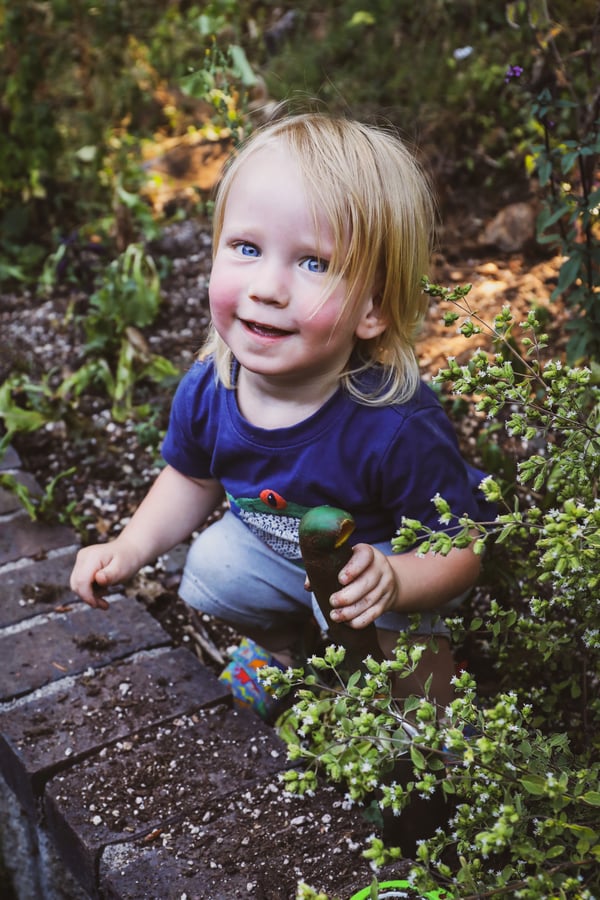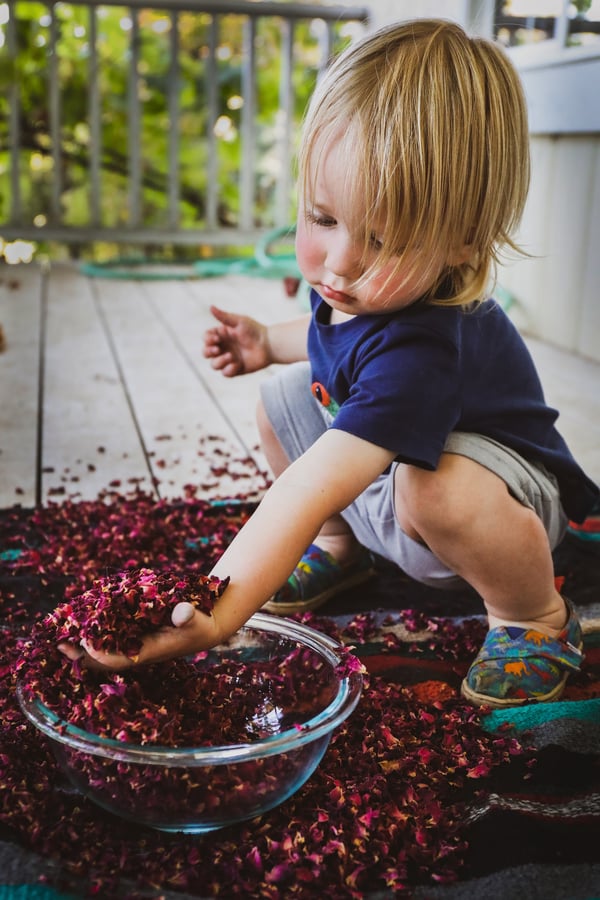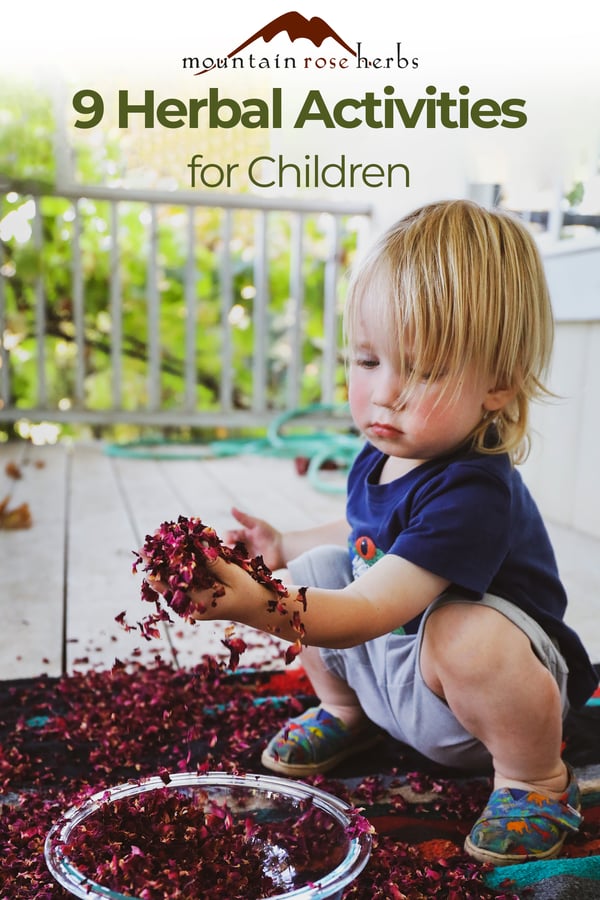Giving children a good herbal foundation will stay with them for their lifetime. Knowledge is power, and when we are young, we are especially open and eager to learn new things about the natural world. In the same way that learning another language is especially helpful in earlier development stages, so is sharing the language of plants. No matter what career and lifestyle children grow into, exploring plants as a child will give them a solid foundation of wisdom that will help them in their day-to-day lives. They will have the ability to take control of their own health and teach others to do the same.
9 Herbal Activities for Children
- Form Relationships with Local Plants: Head outside with a notebook and have your child(ren) tell you what they see first. Then begin to take note of the plants you see in your yard or neighborhood, starting with the common name and adding the Latin name if you know it (or add it later when you can look it up). Even if you don’t think a plant has herbal uses, add it to the notebook anyway. Remember, all plants have value, even if they are not particularly helpful or enjoyable to humans.
- Make DIY Herbal Products: You might start with a few simple items such as making a salve or lip balm. As your child(ren)’s knowledge grows, they may wish to make a salve for mildly irritated skin or other more nuanced purposes. Likewise, they may wish to brew an herbal tea for various types of occasional discomfort.
- Start an Herb Garden: Giving your children a part of the garden or patio to grow their own plants is very empowering and also teaches them responsibility. They will take pride in growing their own botanicals, and when it comes time to use these healthful plants, they will be more receptive since it’s something they planted, grew, and harvested. Begin with some classic herbs like chamomile, mint, basil, rosemary, or lemon balm. Let your child decide on a few herbs that they would like to become familiar with. Have them help create the garden, pot the plants, weed the garden, and water regularly. Encourage them to work with the plants and observe them as they grow. Make sure they taste each plant regularly and record how the flavors change as the plant grows.
- Draw Plants: Drawing forces us to slow down and take in the nuances of our plant allies. Have your child(ren) regularly sketch drawings of the plants’ progression over the course of the growing season, keeping notes on the changes such as when they bloom, when they go to seed, etc. Include harvest information and any remedies your family makes with the herbs.
- Color and Play Games. While drawing is wonderful for some people, it might feel frustrating for others. For those children, coloring and activity books may be a good choice. The Super Cool Kids Activity Book includes botanical word searches, information about plant harvests from around the world for coloring, and some drawing elements. Wildcraft!—a cooperative board game from Learning Herbs—is also an excellent tool that teaches children about herbs.
- Explore Herbal Families. As you work with the herbs, talk with your child(ren) about the Latin names and the family they come from. Discuss characteristics of each family and similarities between plants. If appropriate, have your child(ren) sample the herbs and talk about how that taste makes them feel (puckered, dry mouth, thirsty, etc) and what they think the plant may be useful for. Have them write down these ideas and put their theory to work the next time they have need to. If they are having trouble getting started, try offering them mint and say something like, “This helps to make your tummy happier. When you eat it, what else do you think it would be helpful for?” (freshen breath, soothing, etc.).
- Form a Deep Connection with One Herbal Ally. Once your kids get more familiar with herbs, encourage them to pick one herb to learn about for six months to a year, depending on their age. Encourage them to immerse themselves in the plant, writing songs, stories, and poems about their ally. Help them make as many healthful products as possible with their herbal ally: salves, vinegars, elixirs, oils, poultices, compresses and so on.
- Use the herbs in every way possible. This seems like a given but a lot of people overlook this. Incorporate herbs with your everyday living. Experiment with using plants to dye clothing. Use them in floral arrangements, crafts, nature tables, and other seasonal decorations. Eat them. Make them an integral part of your lifestyle.
- Start an Herbal Library. Offering a variety of books to children is a great way to let them explore herbs on their own. There are a few children’s books available and a wealth of adult herbals that are kid appropriate. In a world where online searches have taken over looking to a book, it is important to teach children that they can turn to books when they have questions.
Remember, no matter what, children are always learning. Even the smallest child can add herbs to oil when making an infused oil or help strip herbs from stems. When they grow tired of the task, let them move on to another while you finish up what you are working on. In time, they will naturally start helping longer and eventually take over some of the herbal DIY activities in the home. Always gently nurture this and remind them to keep records of their experiences in their journals so that they can look back at all the special things that they have made and can begin to form their own recipes.
This post was originally written in 2012 by Kristine Brown of Herbal Roots Zine, a resource for young herbal explorers. It has been refreshed with some updated information and links. Many thanks to Kristine for her contribution to the exploration and growth of the future generations of herbalists.
Interested in an herb-inspired activity book for you or a child in your life?
Check Out the Super Cool Kids Coloring & Activity Book!
You may also be interested in
- Herbal Sensory Games for Kids
- Children's DIY Gift Ideas
- 10 Creative Ways to Use Old Herbs and Spices













